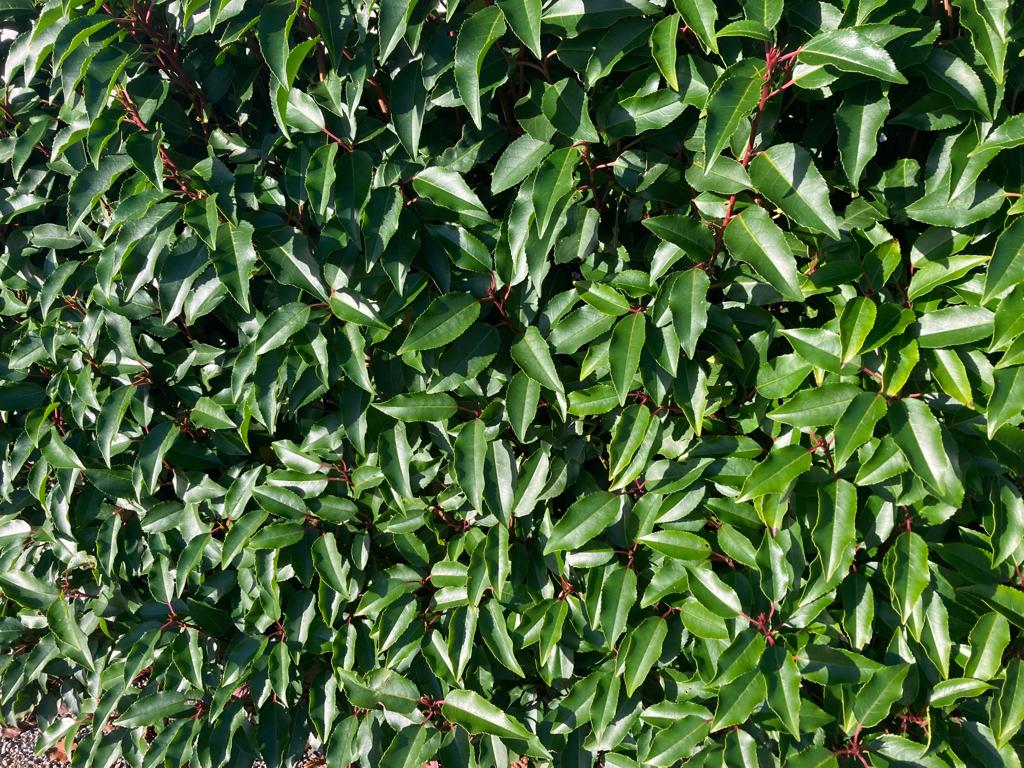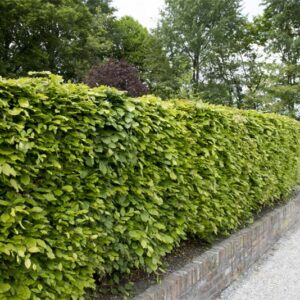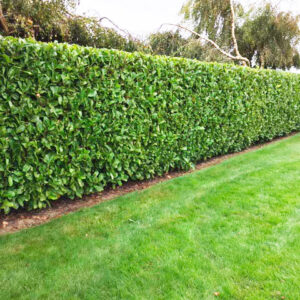Description
Portuguese Laurel (Prunus Lusitanica) is a beautiful evergreen plant that makes for an attractive hedging plant. Easily identified by its long, glossy dark green leaves that sit on rich red stems, it is a popular choice for border hedges surrounding a property.
Producing an abundance of pencil-like spikes of stunning white flowers in early summer that turn to red berries in autumn, the Portuguese Laurel is incredibly popular with wildlife including bees, butterflies and a variety of birds.
How large will a Portuguese laurel hedge grow?
Prunus Lusitanica has a fast growth rate, achieving around 40-60cm growth each year and can grow up to 5m in height. It’s a relatively low maintenance plant to look after requiring a light trim in late summer to remove any damaged or congested branches.
How to grow Portuguese laurel
You should buy and plant Portuguese Laurel (Prunus Lusitanica) during the dormant season, although pot grown Laurel can be planted at any time of year. It grows well in full sun to partial shade and thrives in a variety of soil types including drought and poor, shallow soils making it a hardier choice than the popular Cherry Laurel hedge plant.
The great thing about Portuguese Laurel is that it’s incredibly tough and can be grown in a variety of areas. We recommend avoiding planting in coastal areas due to its inability to tolerate salt-laden air.
How to plant your hedge
You should aim to purchase Portuguese Laurel during the dormant season, from November to March. Bare root plants are widely available at this time and are a cost-effective solution if you’re looking to plant many to use as a privacy screen or wind deterrent.
To grow Portuguese Laurel, you first want to make sure you have the right location for it – somewhere that gets full sun or partial shade is best and, although it is not fussy about soil type you should ensure that it’s not left in standing water.
When you have the perfect location for your laurel, you should dig a hole that is slightly bigger than the bare root plant and plant at the same depth the laurel was growing at previously (there will be an indicator mark on your plant to show you the depth they were planted at previously). Firm the soil well and water to help the roots get established.





